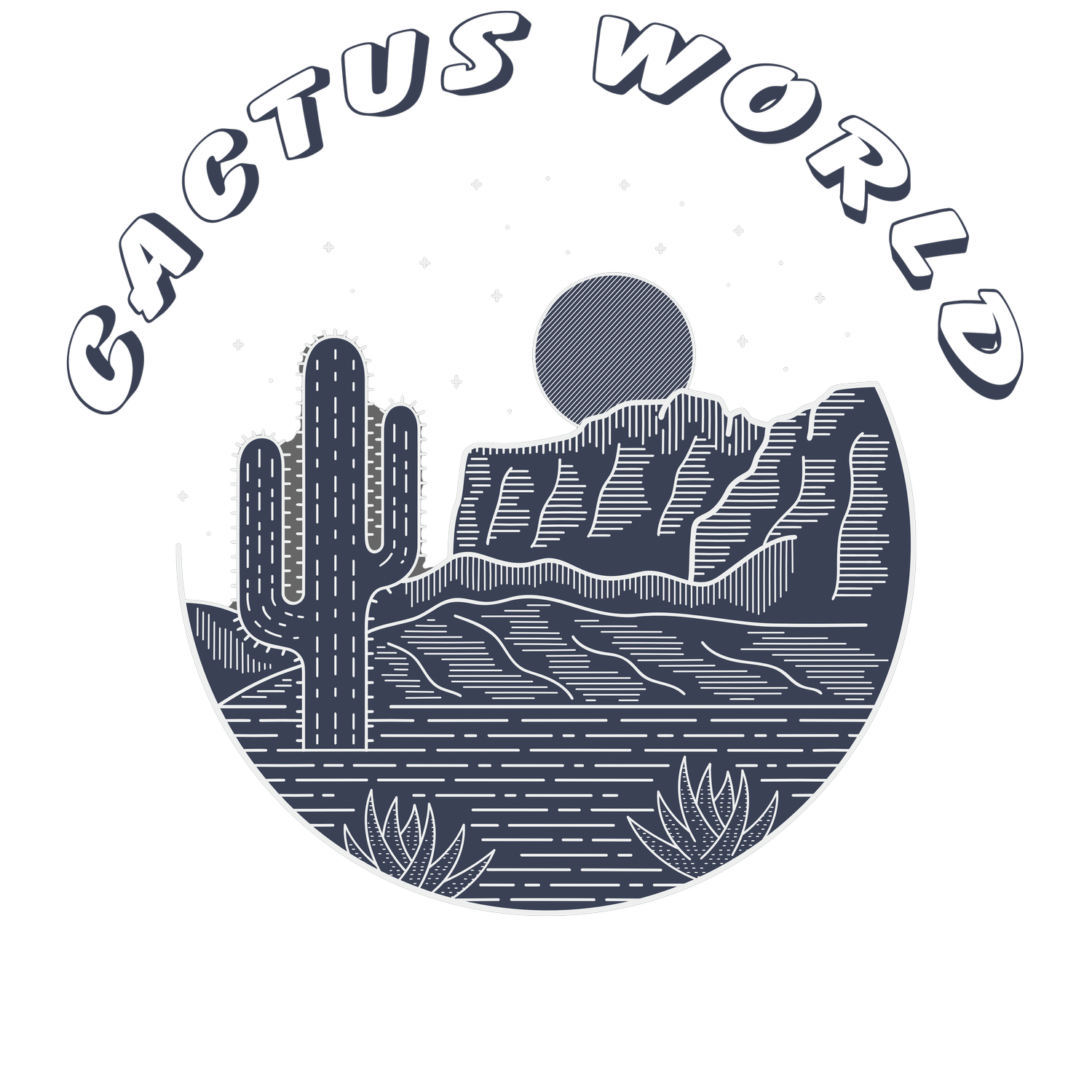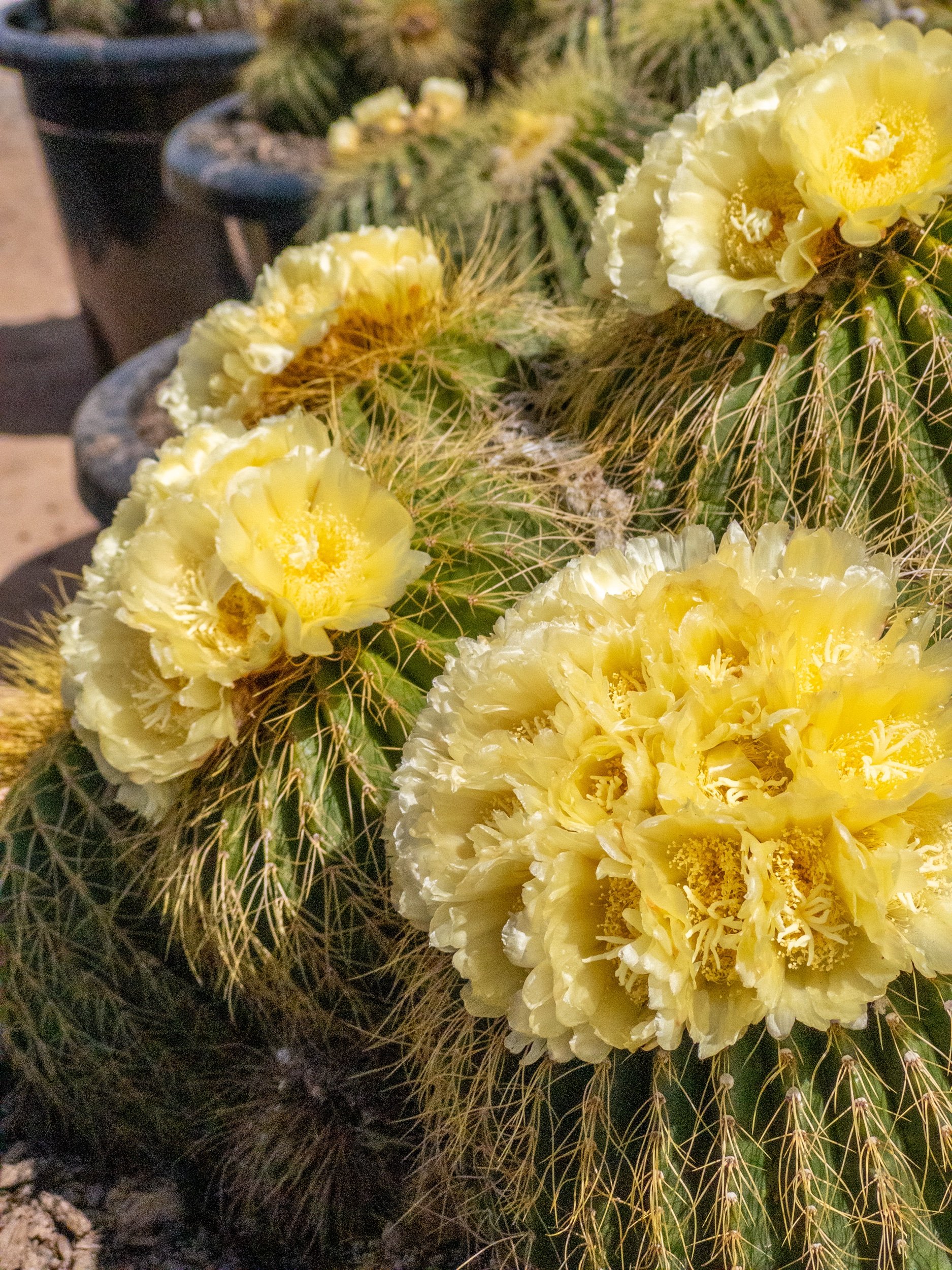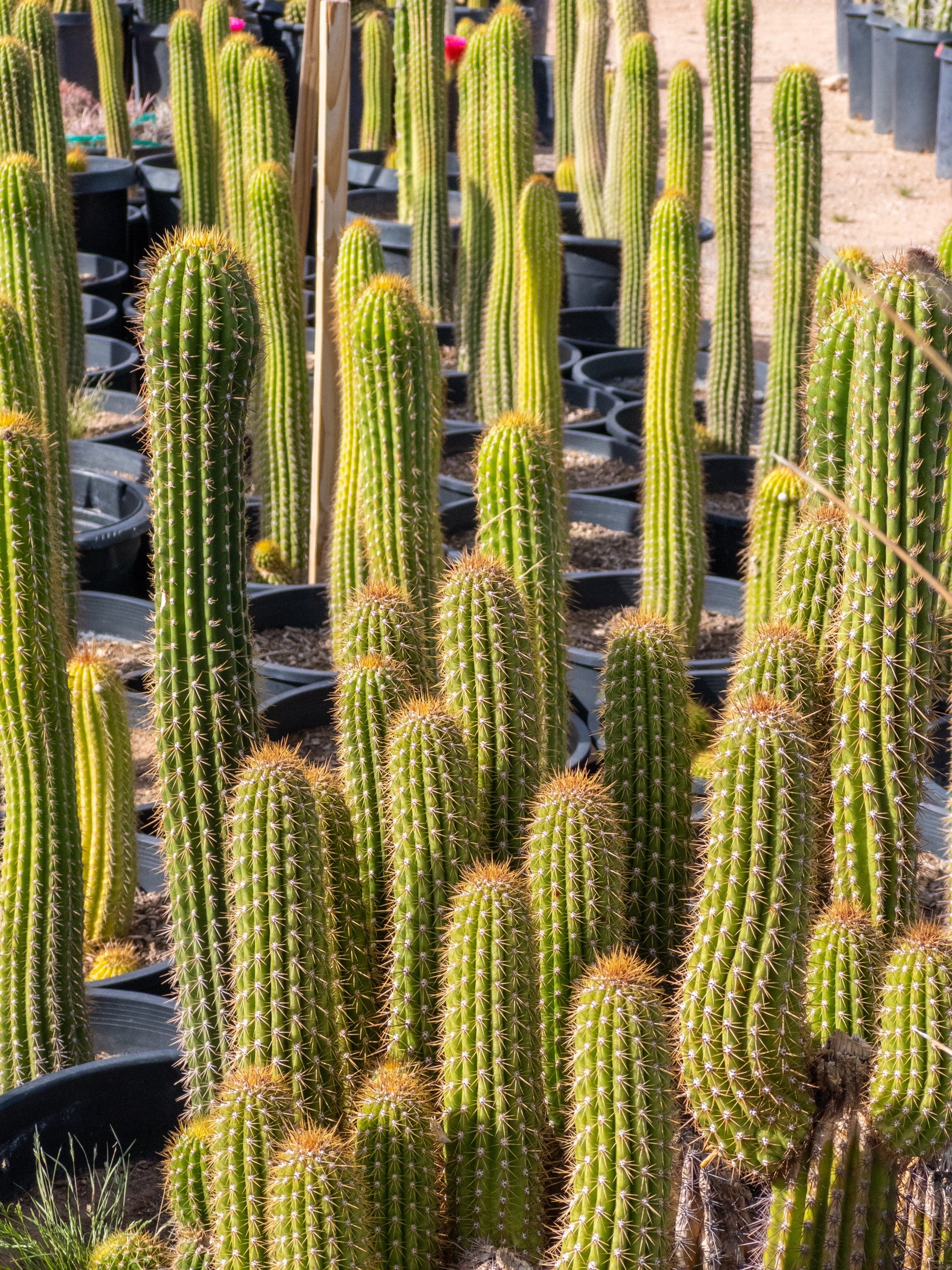 Image 1 of 9
Image 1 of 9

 Image 2 of 9
Image 2 of 9

 Image 3 of 9
Image 3 of 9

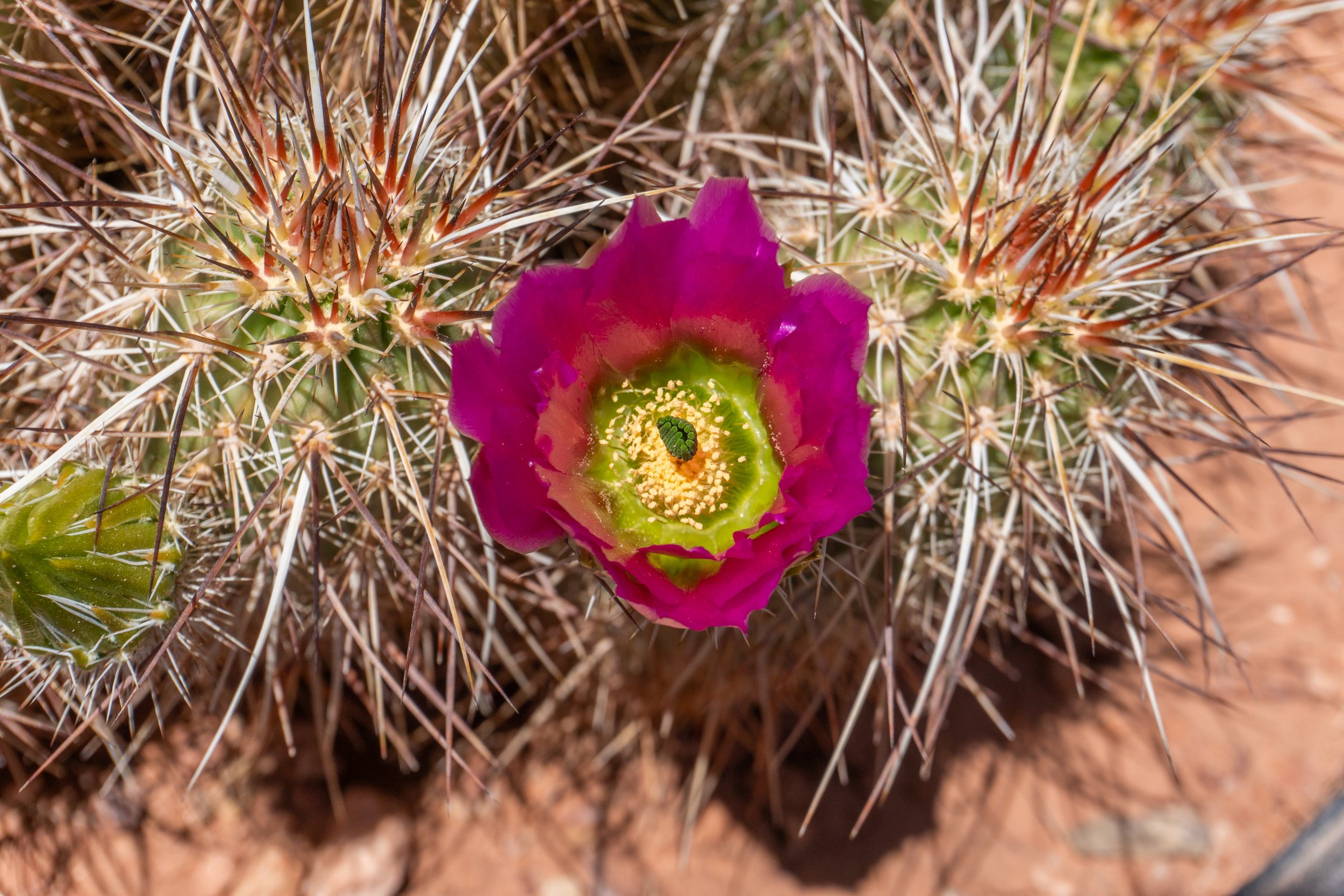 Image 4 of 9
Image 4 of 9

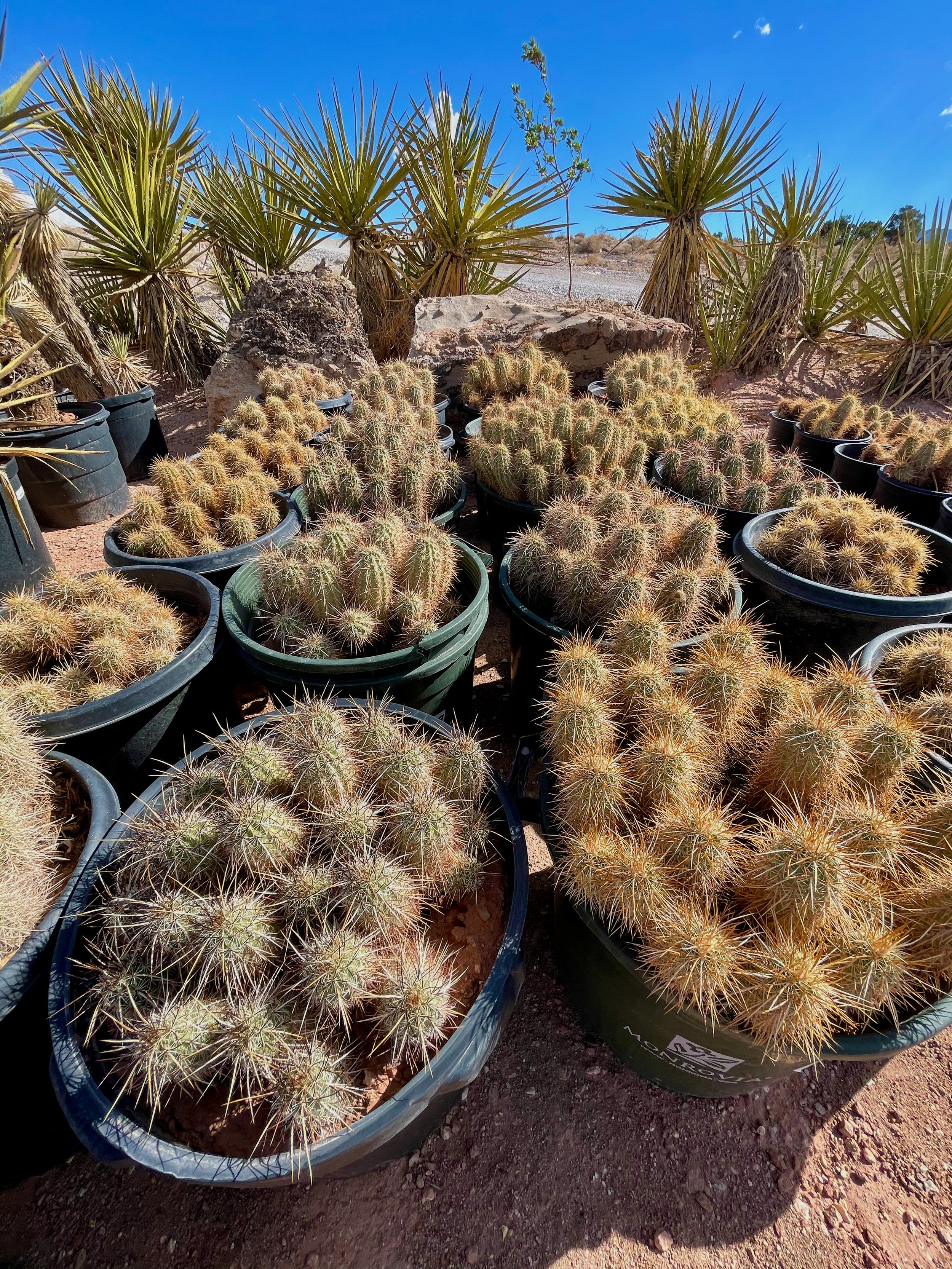 Image 5 of 9
Image 5 of 9

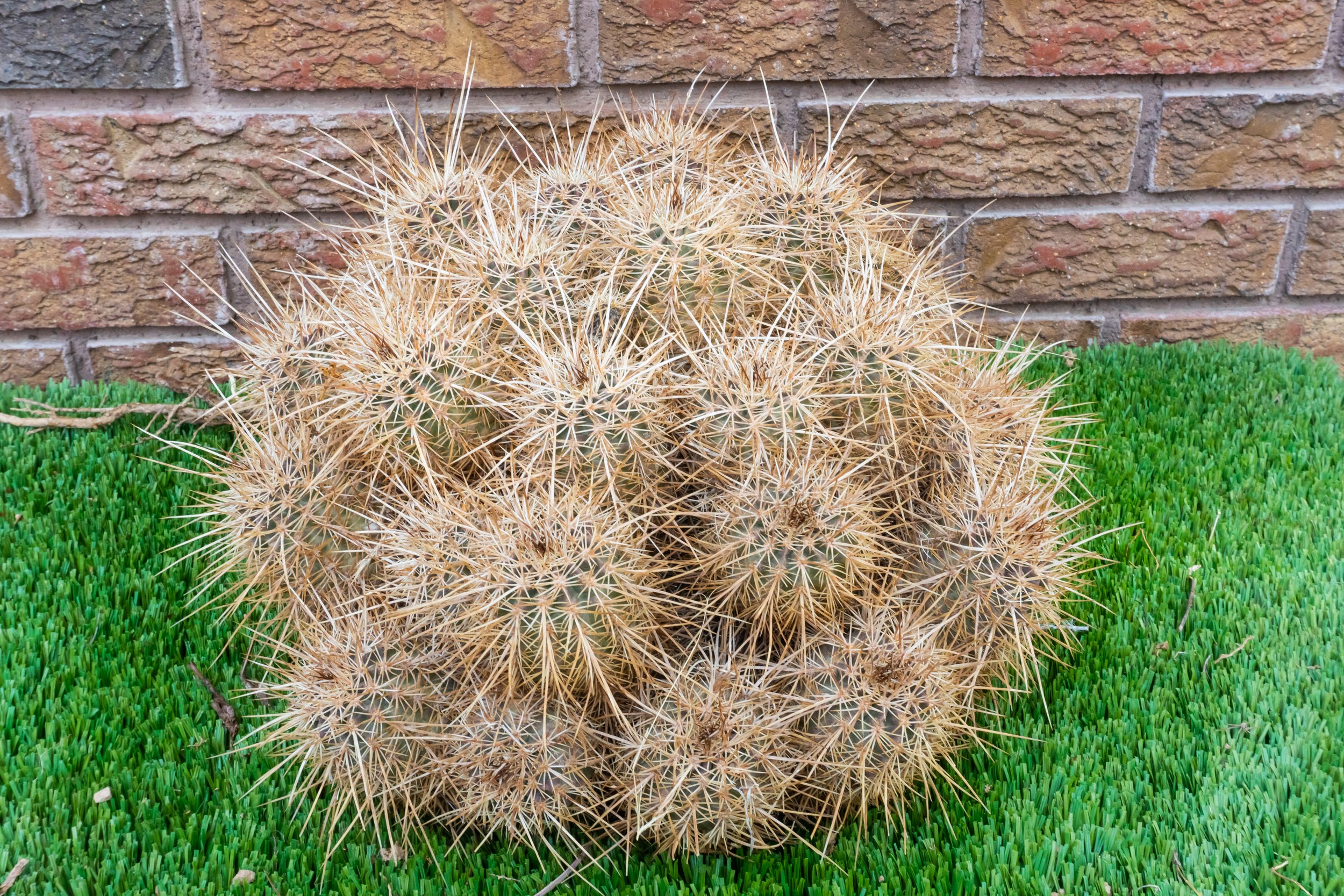 Image 6 of 9
Image 6 of 9

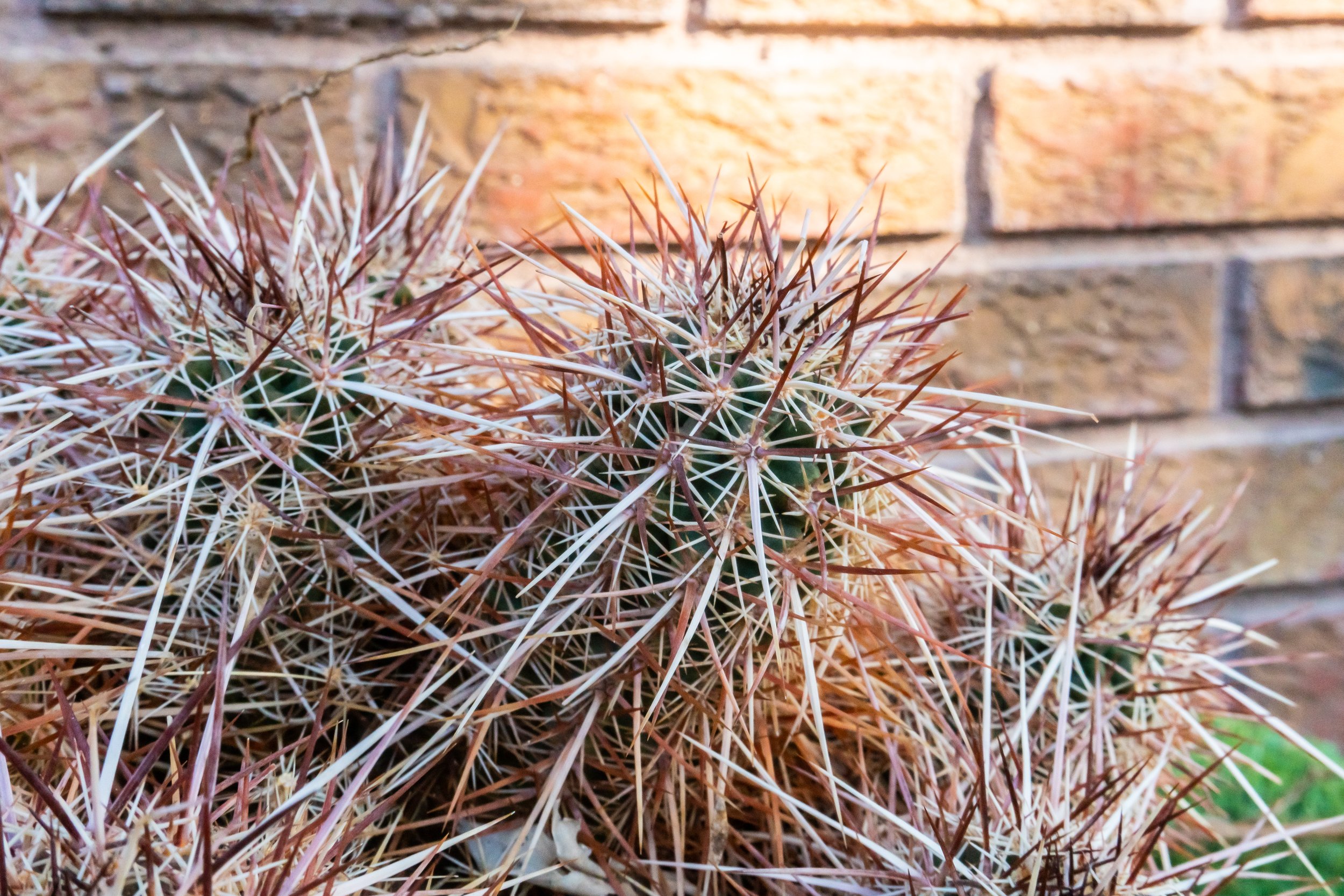 Image 7 of 9
Image 7 of 9

 Image 8 of 9
Image 8 of 9

 Image 9 of 9
Image 9 of 9










Hedgehog cactus (Echinocereus engelmannii)
The Hedgehog cactus, also known as Echinocereus engelmannii, is a stunningly beautiful cactus that is native to the southwestern United States and Mexico. This captivating cactus has a distinctive cylindrical shape with numerous ridges, covered in magnificent pink to magenta flowers.
The origins of the Hedgehog cactus can be traced back to the Sonoran Desert and Chihuahuan Desert, where it has thrived for centuries. The cactus's ability to adapt to harsh desert conditions has allowed it to survive and thrive in its natural habitat, making it an integral part of the desert ecosystem.
The history of the Hedgehog cactus is also deeply intertwined with the history of the indigenous people of the region. For centuries, Native American tribes have used the cactus for food, medicine, and religious ceremonies. Today, the Hedgehog cactus continues to be an important part of the cultural heritage of the Southwest.
But the beauty of the Hedgehog cactus is what truly sets it apart. Its stunning pink to magenta flowers bloom in the spring and summer, creating a breathtaking display of color that is simply irresistible. And while its beauty may be fleeting, the Hedgehog cactus is a true symbol of resilience and endurance, surviving and thriving in some of the harshest environments on earth.
So if you're looking for a plant that is as beautiful as it is fascinating, the Hedgehog cactus is the perfect choice. Its captivating beauty, rich history, and enduring resilience make it an unforgettable addition to any garden or landscape.
Flowers: Magenta, pink, sometimes lavender and purple, appearing in March and April
Sun: Full
Water: Low
Soil: Sandy/ Rocky
Transplanting a Hedgehog cactus can be a delicate process, but with the right tips, you can ensure a successful transition. Here are some guidelines to keep in mind:
Choose the right time: The best time to transplant a Hedgehog cactus is in the early spring or fall when the temperatures are cooler.
Prepare the new pot/hole in ground: Make sure the new pot is clean and has adequate drainage holes. Use a well-draining cactus potting mix, or make your own mix by combining sand, perlite, and potting soil.
Repot the cactus: Place the cactus in the new pot, making sure it is centered and at the same depth as it was in its previous pot. Add the cactus potting mix around the roots, gently firming it down. Avoid watering for at least a week to give the plant time to settle.
As for sun and water needs, Hedgehog cactus thrives in full sun to partial shade and prefers well-drained soil. Water the cactus deeply but infrequently, allowing the soil to dry out completely between watering. Overwatering can cause root rot, so it's important to err on the side of underwatering rather than overwatering. In the winter months, the cactus can go longer periods without water as it becomes dormant.
*PHOTOS ARE EXAMPLES OF PLANT, THE ONE YOU WILL RECEIVE WILL DIFFER SLIGHTLY
SHIPPED BARE ROOT / PLEASE CHECK LOCAL SHIPPING RESTRICTIONS
The Hedgehog cactus, also known as Echinocereus engelmannii, is a stunningly beautiful cactus that is native to the southwestern United States and Mexico. This captivating cactus has a distinctive cylindrical shape with numerous ridges, covered in magnificent pink to magenta flowers.
The origins of the Hedgehog cactus can be traced back to the Sonoran Desert and Chihuahuan Desert, where it has thrived for centuries. The cactus's ability to adapt to harsh desert conditions has allowed it to survive and thrive in its natural habitat, making it an integral part of the desert ecosystem.
The history of the Hedgehog cactus is also deeply intertwined with the history of the indigenous people of the region. For centuries, Native American tribes have used the cactus for food, medicine, and religious ceremonies. Today, the Hedgehog cactus continues to be an important part of the cultural heritage of the Southwest.
But the beauty of the Hedgehog cactus is what truly sets it apart. Its stunning pink to magenta flowers bloom in the spring and summer, creating a breathtaking display of color that is simply irresistible. And while its beauty may be fleeting, the Hedgehog cactus is a true symbol of resilience and endurance, surviving and thriving in some of the harshest environments on earth.
So if you're looking for a plant that is as beautiful as it is fascinating, the Hedgehog cactus is the perfect choice. Its captivating beauty, rich history, and enduring resilience make it an unforgettable addition to any garden or landscape.
Flowers: Magenta, pink, sometimes lavender and purple, appearing in March and April
Sun: Full
Water: Low
Soil: Sandy/ Rocky
Transplanting a Hedgehog cactus can be a delicate process, but with the right tips, you can ensure a successful transition. Here are some guidelines to keep in mind:
Choose the right time: The best time to transplant a Hedgehog cactus is in the early spring or fall when the temperatures are cooler.
Prepare the new pot/hole in ground: Make sure the new pot is clean and has adequate drainage holes. Use a well-draining cactus potting mix, or make your own mix by combining sand, perlite, and potting soil.
Repot the cactus: Place the cactus in the new pot, making sure it is centered and at the same depth as it was in its previous pot. Add the cactus potting mix around the roots, gently firming it down. Avoid watering for at least a week to give the plant time to settle.
As for sun and water needs, Hedgehog cactus thrives in full sun to partial shade and prefers well-drained soil. Water the cactus deeply but infrequently, allowing the soil to dry out completely between watering. Overwatering can cause root rot, so it's important to err on the side of underwatering rather than overwatering. In the winter months, the cactus can go longer periods without water as it becomes dormant.
*PHOTOS ARE EXAMPLES OF PLANT, THE ONE YOU WILL RECEIVE WILL DIFFER SLIGHTLY
SHIPPED BARE ROOT / PLEASE CHECK LOCAL SHIPPING RESTRICTIONS
The Hedgehog cactus, also known as Echinocereus engelmannii, is a stunningly beautiful cactus that is native to the southwestern United States and Mexico. This captivating cactus has a distinctive cylindrical shape with numerous ridges, covered in magnificent pink to magenta flowers.
The origins of the Hedgehog cactus can be traced back to the Sonoran Desert and Chihuahuan Desert, where it has thrived for centuries. The cactus's ability to adapt to harsh desert conditions has allowed it to survive and thrive in its natural habitat, making it an integral part of the desert ecosystem.
The history of the Hedgehog cactus is also deeply intertwined with the history of the indigenous people of the region. For centuries, Native American tribes have used the cactus for food, medicine, and religious ceremonies. Today, the Hedgehog cactus continues to be an important part of the cultural heritage of the Southwest.
But the beauty of the Hedgehog cactus is what truly sets it apart. Its stunning pink to magenta flowers bloom in the spring and summer, creating a breathtaking display of color that is simply irresistible. And while its beauty may be fleeting, the Hedgehog cactus is a true symbol of resilience and endurance, surviving and thriving in some of the harshest environments on earth.
So if you're looking for a plant that is as beautiful as it is fascinating, the Hedgehog cactus is the perfect choice. Its captivating beauty, rich history, and enduring resilience make it an unforgettable addition to any garden or landscape.
Flowers: Magenta, pink, sometimes lavender and purple, appearing in March and April
Sun: Full
Water: Low
Soil: Sandy/ Rocky
Transplanting a Hedgehog cactus can be a delicate process, but with the right tips, you can ensure a successful transition. Here are some guidelines to keep in mind:
Choose the right time: The best time to transplant a Hedgehog cactus is in the early spring or fall when the temperatures are cooler.
Prepare the new pot/hole in ground: Make sure the new pot is clean and has adequate drainage holes. Use a well-draining cactus potting mix, or make your own mix by combining sand, perlite, and potting soil.
Repot the cactus: Place the cactus in the new pot, making sure it is centered and at the same depth as it was in its previous pot. Add the cactus potting mix around the roots, gently firming it down. Avoid watering for at least a week to give the plant time to settle.
As for sun and water needs, Hedgehog cactus thrives in full sun to partial shade and prefers well-drained soil. Water the cactus deeply but infrequently, allowing the soil to dry out completely between watering. Overwatering can cause root rot, so it's important to err on the side of underwatering rather than overwatering. In the winter months, the cactus can go longer periods without water as it becomes dormant.
*PHOTOS ARE EXAMPLES OF PLANT, THE ONE YOU WILL RECEIVE WILL DIFFER SLIGHTLY
SHIPPED BARE ROOT / PLEASE CHECK LOCAL SHIPPING RESTRICTIONS
